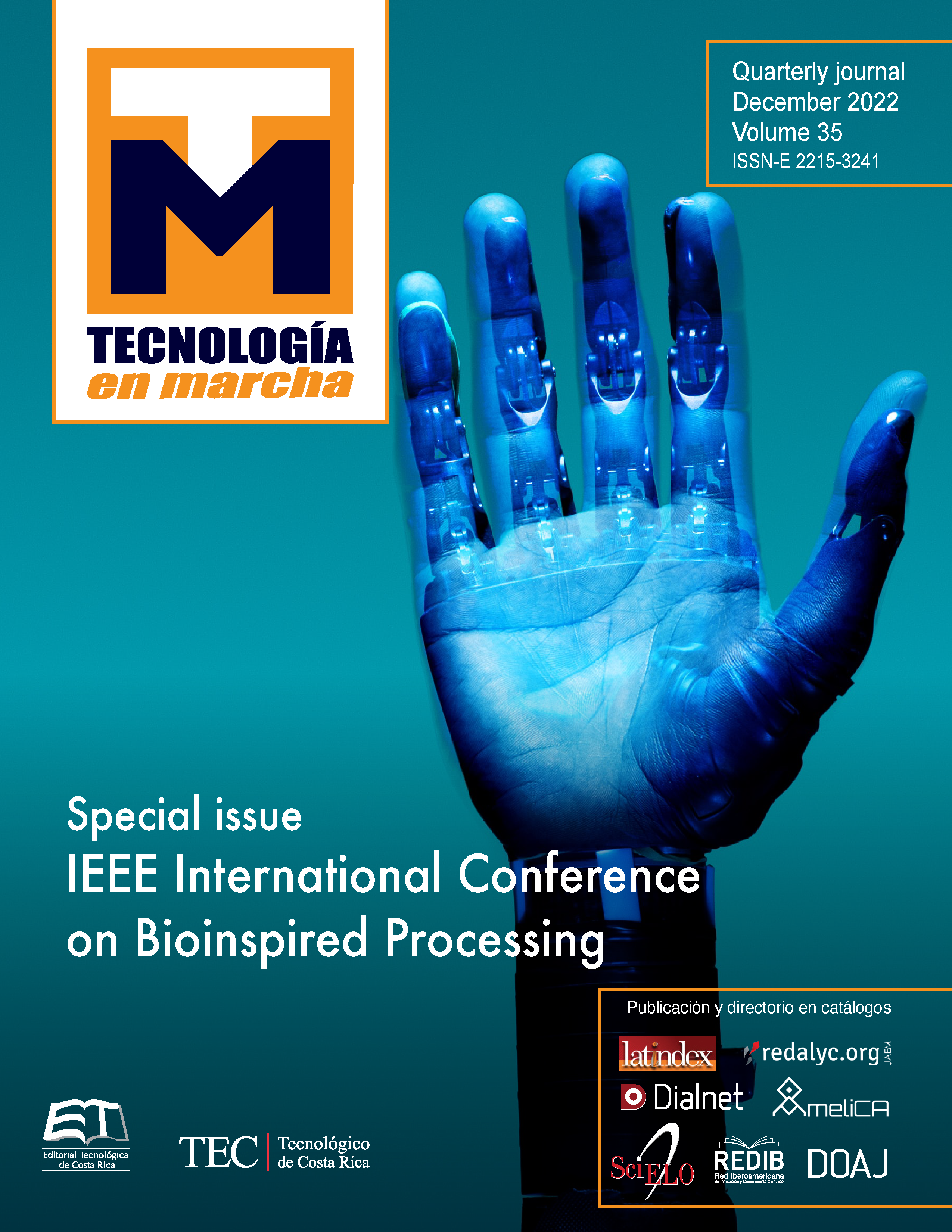Analysis of a cooling system for robotic joints using a computational fluid dynamics study
Main Article Content
Abstract
The cooling system is one of the most important parts of a robot, a correct design allows it to increase its capacity while reducing the chances of a malfunction. In general, cooling systems for humanoid robots require special characteristics to not interfere with the optimal operation; aspects such as weight, size, materials, and positioning of this system are crucial for maximum efficiency. The current problem in this design is that the cooling system needs to maintain its power to perform tasks when lifting heavy weights without consequences such as reduced mobility of the joint, and therefore decrease the robot’s efficiency. In this paper, we studied, analyzed, and discarded existing options of electric motor actuators. Once the viable options were obtained, so we proceed to make a proper design, then was made a computational fluid dynamics study (CFD) to get heat extraction measurements as well as fluid velocity, essential to make the final decision, solving the initial problem.
Article Details

This work is licensed under a Creative Commons Attribution-NonCommercial-NoDerivatives 4.0 International License.
Los autores conservan los derechos de autor y ceden a la revista el derecho de la primera publicación y pueda editarlo, reproducirlo, distribuirlo, exhibirlo y comunicarlo en el país y en el extranjero mediante medios impresos y electrónicos. Asimismo, asumen el compromiso sobre cualquier litigio o reclamación relacionada con derechos de propiedad intelectual, exonerando de responsabilidad a la Editorial Tecnológica de Costa Rica. Además, se establece que los autores pueden realizar otros acuerdos contractuales independientes y adicionales para la distribución no exclusiva de la versión del artículo publicado en esta revista (p. ej., incluirlo en un repositorio institucional o publicarlo en un libro) siempre que indiquen claramente que el trabajo se publicó por primera vez en esta revista.
References
Ackerman, E. (2016). This Robot Can Do More Push-Ups Because It Sweats. Recuperated of https://spectrum. ieee.org/automaton/robotics/humanoids/this-robot-can-do-more-pushups-because-it-sweats.
Cabrera, Franklin. Tigre, E. (2016). Diseño y construcción de los sistemas de refrigeración de un vehículo formula SEA eléctrico [Tesis de Ingeniero Mecánico Automotriz, Universidad Politécnica Salesiana]. Repositorio institucional - Universidad Politécnica Salesiana.
Cegel, Y. Boles, M. (2014). Termodinámica. México. Octava Edición. McGraw Hill.
Martin, H. (2019). Diseño del sistema de refrigeración de un vehículo de fórmula SAE. [Tesis de Ingeniería Mecánica, Universidad Carlos III de Madrid]. Repositorio institucional - Universidad Carlos III de Madrid.
Engineers Edge. (2021). Convective heat transfer coefficients. Recuperated of https://www.engineersedge. com/heat_transfer/convective_heat_transfer_coefficients__133.
Engineering ToolBox. (2003). Overall Heat Transfer Coefficient. [online] Recuperated of https://www.engineeringtoolbox.com/overall-heat-transfer-coefficient-d_434.html.
Gavilema, H. (2014). Estudio teórico y experimental de los parámetros de funcionamiento de un motor de combustión interna a gasolina a diferente concentración de agua-refrigerante [Tesis de Ingeniero Mecánico Automotriz, Escuela Superior Politécnica de Chimborazo]. Repositorio institucional - Escuela Superior Politécnica de Chimborazo.
Guarino, B. (2016). The amazing sweating robot. EU: The Washington Post. Recuperated of https://www.washingtonpost.com/news/morning-mix/wp/2016/10/17/the-remarkable-sweating-robot-researchers-cool-overheating-machines-in-human-style/
Hernández, R., Fernández, C., Baptista, P. (2010). Metodología de la investigación. McGRAW-HILL. (Original publicado en 1991).
Jaramillo, O. (2007). Intercambiadores de calor. Centro de Investigación en Energía. Universidad Nacional Autónoma de México. http://www.cie.unam.mx/~ojs/pub/HeatExchanger/Intercambiadores.pdf.
Kakiuchi, Y. ET. AL. (2015). Development of humanoid robot system for disaster response through team NEDO-JSK’S approach to DARPA. Corea del Sur: IEEE.
Kubota, T. (2017). Stanford researchers develop a new type of soft, growing robot. Stanford, EU: Stanford News. Recuperated of https://news.stanford.edu/2017/07/19/stanford-researchers-develop-new-type-softgrowing-robot/
Pia, M. ET. AL (2016). Direct Liquid Cooling in Low-Power Electrical Machines: Proof-of-Concept. Japan: IEEE.
Rodríguez, M. Ruiz, F. (2019). Comparative efficiency study of two proposed designs tested in water- and aircooling conditions for a high-power humanoid robot hollo joint. Costa Rica. INII.
Rodríguez, M. Ruiz, F. (2019). Torque sensor geometry study on 3D simulated conditions for a Hollow robotic joint. Costa Rica. INII.

